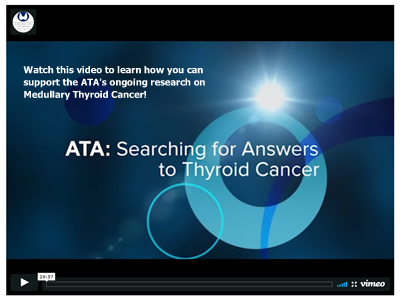Clinical Thyroidology for the Public summarizes selected research studies discussed in the previous month’s issue of Clinical Thyroidology, an official publication of the American Thyroid Association. Editor-in-chief, Alan Farwell, MD, FACE
Volume 10 Issue 8
Available in pdf format for saving and printing and Web page format for viewing online
Available in pdf format for saving and printing and Web page format for viewing online
PDF Format for Saving and Printing
Clinical Thyroidology for the Public Volume 9 Issue 9 (PDF file, 1.94 MB)
TABLE OF CONTENTS – Web Format
THYROID AND PREGNANCY Higher TSH values before pregnancy are associated with adverse pregnancy outcomes
While it is clear that overt hypothyroidism in the mother during pregnancy can affect the baby’s brain development or cause other problems with the pregnancy, it is not clear if subclinical hypothyroidism would have similar adverse effects. Previous studies that have been done on this topic have shown mixed results. In the current study, the authors studied the effect of subclinical hypothyroidism detected before pregnancy on complications of pregnancy.
Chen S et al. Preconception TSH levels and pregnancy outcomes: a population-based cohort study in 184,611 women. Clin Endocrinol (Oxf). March 25, 2017 [Epub ahead of print].
(PDF File for saving and printing, 617 KB)
THYROID AND PREGNANCY Thyroid function in pregnancy
Both hypothyroidism and hyperthyroidism in the mother can affect pregnancy outcomes as well as the baby’s development. Although there have been a number of studies linking abnormal thyroid function to increased risk of pregnancy complications, universal screening for thyroid disease during pregnancy is still debated. These authors sought to examine thyroid function during early pregnancy in Danish women and correlate the levels with the diagnosis of thyroid disease before or after pregnancy.
Andersen Sl and Olsen J. Early Pregnancy Thyroid Function Test Abnormalities in Biobank Sera from Women Clinically Diagnosed with Thyroid Dysfunction Before or After Pregnancy. Thyroid. 2017. 27(3): 451-459.
(PDF File for saving and printing, 619 KB)
HYPOTHYROIDISM Delaying ultrasonography in congenital hypothyroidism may give misleading results.
Congenital hypothyroidism is a disorder in which babies are born with low thyroid hormone levels and is estimated to occur in 1:1700 newborns. Identifying the cause of congenital hypothyroidism has important genetic implications. This study was done to determine whether ultrasound of the thyroid could have a role in the early diagnosis of congenital hypothyroidism and to determine whether delaying ultrasound could provide misleading information.
Borges MF et al. Timing of thyroid ultrasonography in the etiological investigation of congenital hypothyroidism. Arch Endocrinol Metab. February 13, 2017 [Epub ahead of print]. doi:10.1590/2359-3997000000239
(PDF File for saving and printing, 578 KB)
HYPOTHYROIDISM Thyroid function, cholesterol levels, and heart disease
There have been several studies suggesting potential associations between mild thyroid problems and heart problems. This study was done to assess the associations between mild hypothyroidism or mild hyperthyroidism and common risk factors for heart disease such as cholesterol levels, blood pressures, and diabetes and events such as a heart attack and stroke.
Martin SS et al. Thyroid Function, Cardiovascular Risk Factors, and Incident Atherosclerotic Cardiovascular Disease: The Atherosclerosis Risk in Communities (ARIC) Study. J Clin Endocrinol Metab. 2017 Jun 12. doi: 10.1210/jc.2017-00986. [Epub ahead of print]
(PDF File for saving and printing, 526 KB)
THYROID NODULES Incidental thyroid nodules detected on CT, MRI, or PET-CT scans correlate well with subsequent ultrasound evaluation
Thyroid nodules are frequently detected by other imaging tests such as CT, MRI and PET-CT. It is not clear whether these imaging tests can accurately predict thyroid cancer by themselves without the need for a neck ultrasound. The aims of the present study are to a) evaluate whether the size of thyroid nodules discovered on CT, MRI or PET-CT correlate with measurements at subsequent ultrasound and b) to determine the impact of applying the radiology recommendations on thyroid nodule outcomes.
Ní Mhuircheartaigh JM et al. Correlation between the size of incidental thyroid nodules detected on CT, MRI or PET-CT and subsequent ultrasound Clin Imaging 2016;40:1162-6.
(PDF File for saving and printing, 675 KB)
THYROID CANCER The combination of BRAF600E mutation and TERT promotor mutations increases risk of recurrence and death in papillary thyroid cancer
Ideally, identifying those at higher risk of cancer recurrence would potentially allow the more aggressive therapies to be utilized when appropriate for patients with high risk papillary thyroid cancer. Recently, 2 specific molecular markers, BRAFv600E and TERT promotor mutations have been associated with aggressive tumor behavior and worse outcomes in papillary thyroid cancer. This study aimed to determine the prognosis of papillary thyroid cancer in patients with either of these mutations alone or in combination by a review of the current studies
Moon S et al. Effects of coexistent BRAFV600E and TERT promoter mutations on poor clinical outcomes in papillary thyroid cancer: a meta-analysis. Thyroid. March 7, 2017 [Epub ahead of print].
(PDF File for saving and printing, 574 KB)





